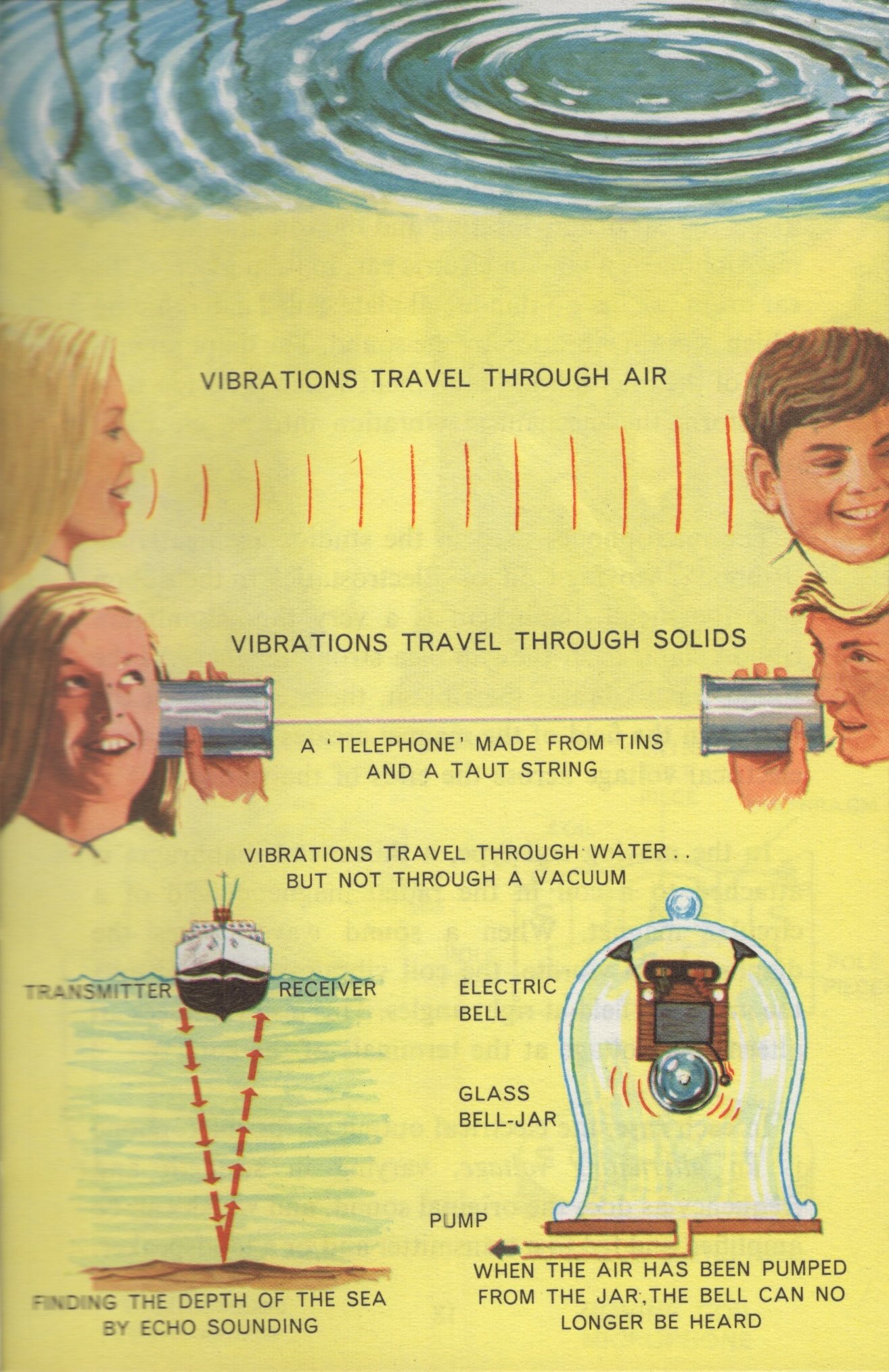We can illustrate the movement of sound waves quite simply by studying something we have all done at some time - dropping a stone into a pond.
A stone dropped into a smooth pond causes little ripples - or waves - to radiate out from the centre. The ripples continue to move outward, causing less and less disturbance to the surface of the pond as they get further away from the spot at which the stone was thrown in. Eventually they disappear altogether, leaving the pond perfectly smooth again. A big stone will cause big ripples which will travel much further across the pond before they disappear.
Sound waves travel in a similar manner to the ripples on the pond. A loud noise, like a big stone, will cause a bigger disturbance which will travel further. Just as the water was necessary to carry the ripples, so must air - or a liquid or some solid material - be present to carry sound waves. If something vibrates and there is no air or liquid or solids to carry the sound waves, we do not hear the sound. It would be useless to shout for help in Space because, even if someone was near enough to help, there is no air to carry the vibrations. Astronauts 'walking' in space have to speak to one another by means of two-way radio. Electro-magnetic radio waves do not need air to carry them: they travel better without.
Material taken from: A Ladybird 'Achievements' Book, Publishers: Wills & Hepworth Ltd, Loughborough, First published 1968. Printed in England.
